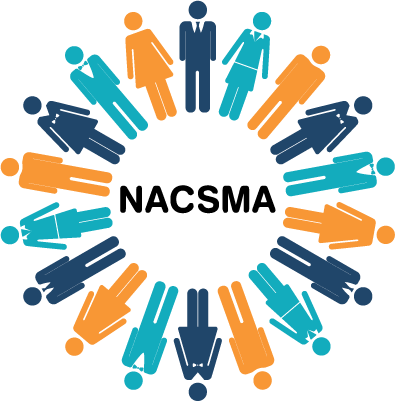MANAGEMENT DEVELOPMENT
Attracting Participants
Attracting the right participants can be tricky. How do you identify employees who are best suited for leadership? The obvious qualities are the agents that rise above in the contact center they have the most energy, ambition and success. Keep in mind the best agents don’t always make the best supervisors. The skill sets from agent to supervisor are complete opposite. And don’t leave out existing supervisors and managers for this program. Just because someone is in a leadership position doesn’t mean they have the formal training to go with it. Their success could be the luck of the draw and when the environment changes, will those managers be prepared? Include existing leaders as potential candidates the Leadership Development Program.
Some organizations will sponsor Manager for a Day and allow potential supervisors work side-by-side for a day and really get a good sense of what supervisors do daily. Managing people isn’t for everyone and that’s ok because contact centers still need agents to take calls.
Another recruiting strategy is an application process. Make it a simple process, evaluate applicant’s suitability and make selections and inform the applicants. Don’t overthink the recruitment process.
Here are some suggestions for selecting candidates:
– Consider length of service, status, and standing (acceptable performance review)
– Occupations – where are the leader shortages now and in the future?
– Location – where does this program reside?
– Specific experience and educational requirements
– Commitment to the organization – willingness to stick around for a given length of time
Recruiting participants is a sales and marketing job. The promotion of this program is important because it sends the message that the company values agents enough to develop them, which is what employees want to hear. When agents know there are no positions available they will go elsewhere to be promoted, if they know you are developing them for the future they will stick around. You may want to hand pick the agents you put into this program, putting everyone through a leadership development program historically hasn’t benefited companies.

Introduction to Management Training
Implementing a Leadership Development Program (LDP) is another effective way to build a pipeline of potential managers within your contact center. Many organizations recognize the value of cultivating talent internally and this formal program is designed to expand the capabilities in potential leaders. This systematic approach to developing managers has proven to be successful for many organizations.
Designing a program that has a set of outcomes, expectations and exposes potential managers to the many different management styles and models will serve managers and the organization alike.
Leaders are developed and not born! Skilled leaders are in short supply. Too many contact centers promote agents and hope for the best. Just because you promoted your top agents doesn’t mean they will automatically become your top supervisors. You must provide new supervisors with the leadership mindset and tools they need to be successful. Floor supervisors, who are leaders, are responsible for spear heading organizational business strategy; including change management, process improvement and the development of their team.
The goal is creating a leadership development programs that meets the contact centers goals and objectives. Before designing the program be clear in the vision and stated goals. This might seem like an obvious step, yet it gets skipped. When it comes time to recruit both Leaders and Leader Development Trainees (LDTs) stating goals and outcomes will help you sell it.
Some potential questions to ask:
– What do you want future leaders to be able to accomplish?
– What behaviors, mindset and attitudes do you want future leaders to hold?
– What skills and knowledge do you want leaders to master?
Implementing Leadership!
The best Leadership Development programs include real-world work. It’s a fine balance of education, training, coaching and doing real work.
First, assess current leadership skills and styles with a 360-degree leadership survey and assessment. The data can be used as a baseline; it will help in the development of the LDT’s individual training plan and the data can be used for comparison at the end of program.
Secondly, develop the curriculum for the program. This should include classroom, self-study, projects, on-the-job as well as one-on-one coaching and mentoring. Providing LDTs the opportunity to learn all the facets of the business prepares them for what they will face in the contact center. Knowing where to get answers and knowing who to reach out to makes all the difference in resolving customer issues.
The program should include technical training; developing and mastering the business and job. For example, mortgage LDT’s learned to process loan files from end-to-end learning the mortgage business from the operations side before moving to the sales department to learn how the loans come in. This included mortgage 101 education, hands-on OJT, tests, and systems training.
Teach new leaders interpersonal skills. The ability to effectively interact with other people is what leaders do all day. This is the most challenging but achievable. Experiential learning is the most effective approach; role playing, participating in organization development projects, engaging in a case analysis with other LDTs, rotating jobs that require managerial tasks and provide feedback along the way.
A challenge agents have making the transition to supervisor is the conceptual thinking. Getting new managers to think more abstract and critical. Good leaders have developed critically thinking, strategic thinking and decisiveness. Learning these skills comes from a variety of business simulations, formal education, mentor feedback, as well as OTJ.
Finally, the feedback loop must be included in this process. Providing the LDT with constructive feedback throughout the process as well as at the end keeps the Leadership Trainee focused on continuous improvement. Use a 360 evaluation; evaluations from managers the LDT has worked with. What metrics can be used to track progress and results? Choose metrics the new manager has control over and feedback will build confidence and self-esteem.
INDUSTRY SERVICE TIPS
1. Define your contact center’s leadership needs. What does leadership mean in your contact center? Be specific. Vagueness breeds more vagueness. Build a program around the specific needs.
2. Practice. When managers are away let leadership development trainees step in and get some practice. These hands-on experiences will prove to be invaluable with lessons learned.

NEXT STEPS
To sustain a viable pipeline of managers, contact centers want to invest in a Leadership Development Program. Companies prefer to hire from within but many times don’t have the right leadership talent available internally, which forces companies to look outside. Implementing an LDP can change that scenario. Leaders are developed over time with the proper structure, leadership and direction.
The best LDP programs include real-world work, education, training and coaching guided by a structured curriculum with tests or accountability checkpoints along the way. Providing Leadership Development Trainees with the opportunity to learn all aspects of the business backfills their experience. The program should include self-study as well as group training and discussion. Assign the trainee with a project; something they can call their own and are responsible for managing and reporting the results.
Developing a Leadership Development Program is a wise investment for long-term staffing and growth. Well-led organizations tend to attract quality applicants, produce satisfied employees, incur less unwanted turnover, cultivate loyal customers, and yield impressive financial returns. Sounds like a tall order but it is possible with a well thought-out program that is committed to its people.
A Day In the Life
An LDTs day will include some self-study, perhaps an online course as well as a group video and discussion. The LDT’s will be assigned a project to manage which includes managing the results, the people who are doing the work as well as resolving any issues that come up. The LDT will also shadow the department manager in meetings and conference calls.
Once a week the LDT and manager will have a one-on-one to check in on the assigned project, provide feedback, review program objectives, test results and if there is job rotation determine if the LDT is ready to move to the next phase of the LDP.

Graduation
The graduates from the program and is promoted to a leadership position within the contact center. This is an exciting day for everyone. This sends a strong message out to the agents that the company is committed to their success and the LDP process does work.
Evaluation is an important part of graduation. Everyone needs to answer the following questions:
– How well is this program working?
– Did it accomplish the stated goals that were set out in the beginning?
– Evaluate the knowledge and skills transfer, the behavior changes, and if possible the impact on business and any ROI.
– Did everyone graduate? How many participants were promoted as a result?
– Are participants more effective in their current jobs?
Scour evaluations for suggestions and improvement ideas and put those into practice in your next round and each time you will move your Leadership Development Program even higher.
VIDEO FROM OUR EXPERTS



INDUSTRY EXPERTS

Company 1

Company 2

Company 3
NETWORKING FOR CONTACT CENTER PROFESSIONALS
ABOUT NACSMA
NACSMA brings together like-minded professionals focused on advancing the customer contact industry and creating career growth.
BEST-IN-CLASS
Management of a best-in-class contact center sites require the continuous review of Agent Sourcing Models, Organizational Training and Management Development Programs.
NACSMA MEMBERSHIP
NACSMA is a professional, non-profit association whose members represent customer contact organizations and the vendors who support them.
IMPLEMENTATION
When a contact center organization expands to an additional site or requires new space, the steps to properly implement are unique to each organization but do have standard phases.
